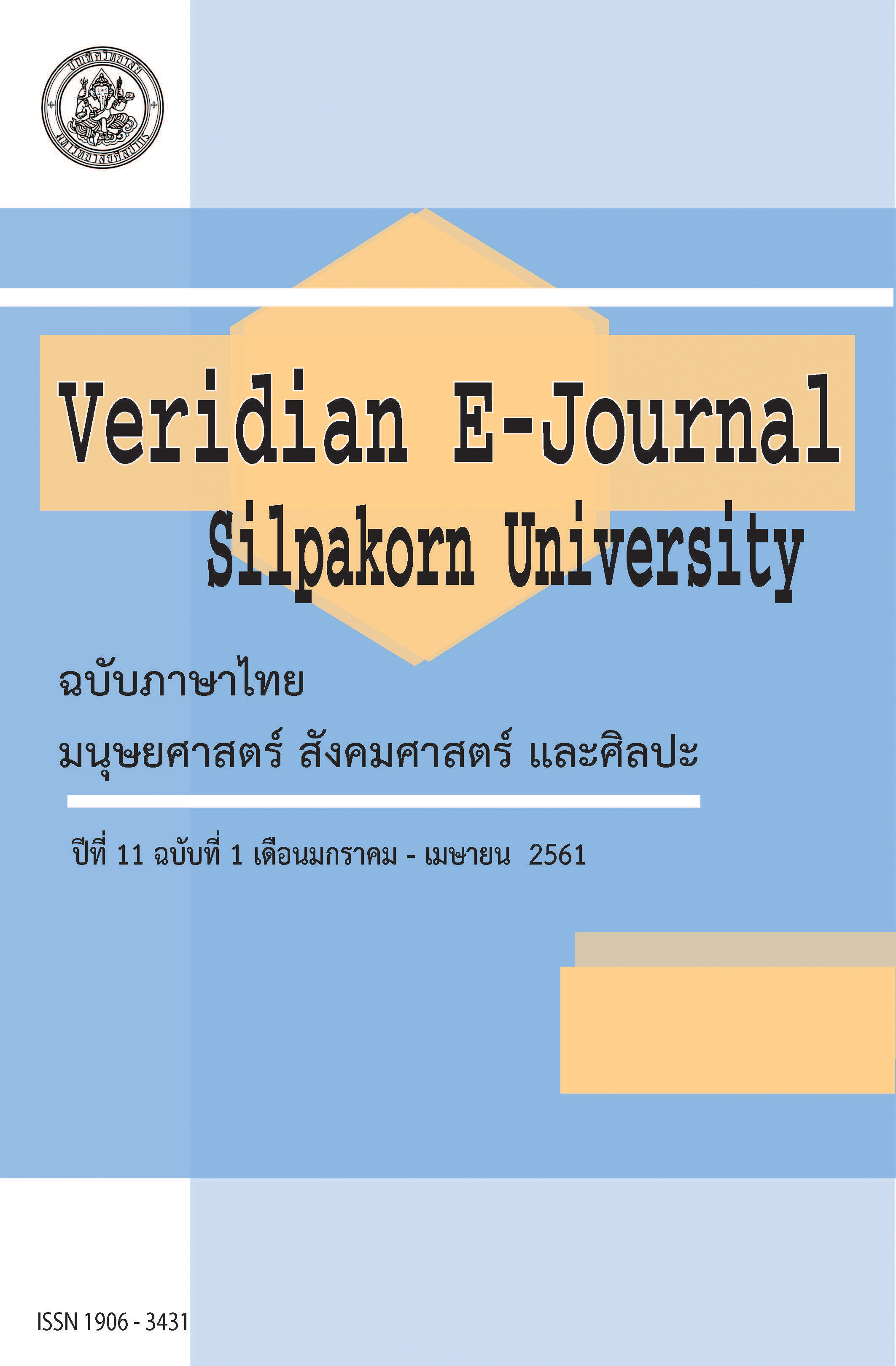รายการสาระบันเทิงของสถานีโทรทัศน์ไทยพีบีเอสตามกรอบตัวชี้วัดคุณภาพ รายการสื่อสาธารณะ (Thai PBS Entertainment Programs according to Program Quality Assessment Framework of Public Broadcasting Service)
Main Article Content
Abstract
การวิจัยนี้มีวัตถุประสงค์เพื่อ 1.วิเคราะห์รายการสาระบันเทิงของสถานีโทรทัศน์ไทยพีบีเอส ตามกรอบตัวชี้วัดคุณภาพรายการสื่อสาธารณะใน 4 ด้าน ได้แก่ ด้านความเป็นต้นแบบ แปลกใหม่ ด้านผลต่อผู้ชม ด้านการเรียนรู้สังคมของผู้ชม และด้านความต่อเนื่อง รอบด้าน 2.เพื่อเปรียบเทียบลักษณะทางประชากรกับระดับความคิดเห็นที่มีต่อคุณภาพรายการ โดยใช้วิธีการวิเคราะห์เนื้อหารายการสาระบันเทิง 8 รายการ 32 ตอน และการสำรวจความคิดเห็นของผู้ชมที่มีต่อรายการสาระบันเทิงของสถานีโทรทัศน์ไทยพีบีเอส จำนวน 400 คน กลุ่มตัวอย่างที่ใช้ในการวิจัยได้แก่ 1.รายการสาระบันเทิงที่ออกอากาศระหว่างเดือนกันยายน - ธันวาคม 2558 ได้มาโดยการสุ่มตัวอย่างแบบเจาะจง (Purposive sampling) เดือนละ 1 ตอนจากแต่ละเดือน 2.ผู้ชมรายการสาระบันเทิงที่ออกอากาศระหว่างเดือนกันยายน - ธันวาคม 2558 ที่มีอายุตั้งแต่ 18 ปี ขึ้นไป ได้มาโดยวิธีการสุ่มตัวอย่างแบบสองขั้นตอน คือ การแบ่งแบบกลุ่มและการเลือกกลุ่มตัวอย่างแบบสะดวก ศึกษาในปีการศึกษา 2559 สถิติที่ใช้ในการวิเคราะห์ข้อมูลได้แก่ สถิติเชิงพรรณนา ประกอบด้วย ค่าร้อยละ (Percentage) ค่าเฉลี่ย (Mean) ส่วนเบี่ยงเบนมาตรฐาน (S.D.) และสถิติเชิงอ้างอิงในการทดสอบสมมติฐาน ได้แก่ ค่าที (t-test) และ ค่าเอฟ (f-test) กำหนดระดับนัยสำคัญทางสถิติที่ 0.05 ผลการศึกษาพบว่า 1) ด้านความเป็นต้นแบบ แปลกใหม่ รายการร้อยละ 100 สอดคล้องกับทั้ง 4 ตัวชี้วัดย่อย และผลการสำรวจความคิดเห็นของผู้ชมพบว่ามีคุณภาพในระดับสูง (x = 3.85, S.D. = .73) 2) ด้านความต่อเนื่อง รอบด้าน รายการร้อยละ 100 ไม่สอดคล้องกับ 2 ตัวชี้วัดย่อย ร้อยละ 50 สอดคล้องกับ 1 ตัวชี้วัดย่อย และร้อยละ 100 สอดคล้องกับ 1 ตัวชี้วัดย่อย ส่วนการสำรวจความคิดเห็นของผู้ชมพบว่ามีคุณภาพในระดับสูง (x = 3.92, S.D. =.79) 3) ด้านผลต่อผู้ชม และ 4) ด้านการเรียนรู้สังคมของผู้ชม พบว่า ผลการสำรวจความคิดเห็นของผู้ชมต่อคุณภาพรายการอยู่ในระดับสูง ( x = 3.83, S.D. =.81 และ = 3.95, S.D. = .79 ตามลำดับ) ส่วนผลการทดสอบสมมติฐาน พบว่า ผู้ชมที่มีเพศและอายุแตกต่างกัน มีความคิดเห็นต่อระดับคุณภาพรายการสาระบันเทิงทั้ง 4 ด้านไม่แตกต่างกัน ในขณะที่ผู้ชมที่มีระดับการศึกษาแตกต่างกัน มีความคิดเห็นต่อระดับคุณภาพรายการสาระบันเทิงแตกต่างกันอย่างมีนัยสำคัญทางสถิติที่ 0.05
The objectives of this research were 1.to analyze entertainment programs of Thai PBS according to 4 assessment frameworks (Persistence, Originality and Innovation, Audience’s social learning, and Audience Impact) 2.to compare demographic data and opinions of the quality of the programs. It employed content analysis methods (8 entertainment programs, 32 episodes) and opinion surveys of 400 audiences. The subjects of this research were 1) the entertainment programs were aired between September and December in 2014 from Purposive Sampling method (1 episode /month) 2) Audiences were aged 18 and older who viewed entertainment programs that were aired between September and December 2014 from 2-stages sampling method (Cluster and Convenience sampling) This research was studied in the academic year 2015 and used descriptive statistics (Percentage, Mean, and S.D.) and inferential statistics (t-test, f-test) for data analysis. The result showed that 1) Originality and Innovation dimension: 100% of the program samples were consistent with 4 subsidiary assessment indicators and audiences rated it with a high level of quality ( = 3.85, S.D.=.73) 2) Persistence dimension: 100% of the program samples were not consistent with 2 subsidiary assessment indicators, but 50% were consistent with 1 indicator and 100% were consistent with 1 indicator and high levels of audiences’ opinions ( = 3.92, S.D.=.79). 3) Audience impact and 4) Audience’s social learning dimension: the opinions of audiences were at high levels ( = 3.83, S.D.=.81, = 3.95, S.D.= .79 respectively). The results of hypothesis testing found that the difference in gender and age did not correspond with audiences’ opinion about the quality of entertainment programs in 4 dimensions, while the difference in audiences’ education level showed different level of the quality of entertainment programs at the 0.05 level of significance.
